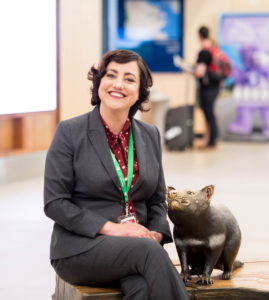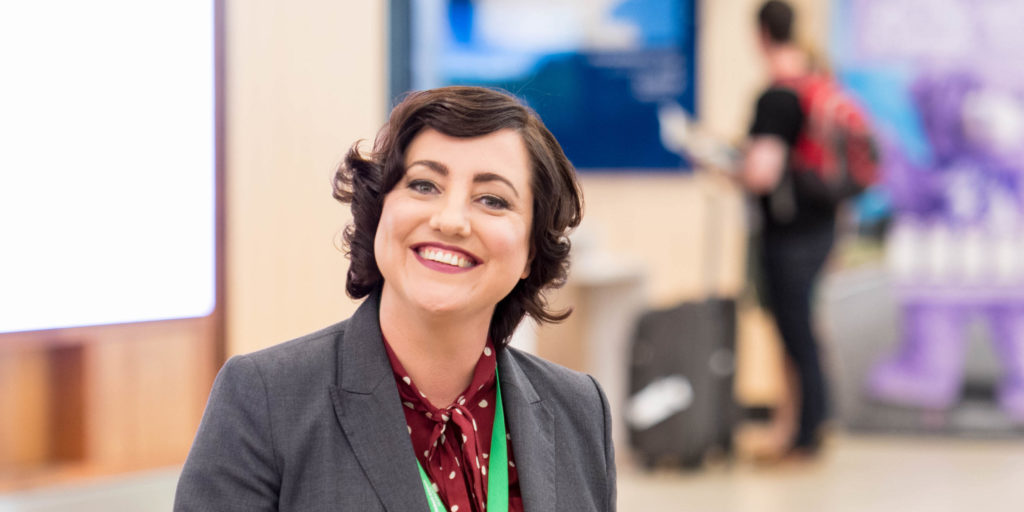Sarah Renner, CEO of Australia’s Hobart Airport, previews her presentation at Passenger Terminal Conference 2019, where she will reveal how the airport plans to meet forecast passenger demand, while balancing infrastructure investment within the ‘dual-till’ regulatory environment.
Please describe your presentation.
Hobart Airport is the fastest growing capital city airport in Australia. It recorded approximately 2.6 million passengers in 2017, with above-average domestic growth forecast for the future. The airport’s immediate challenge is responding to its forecast passenger demand while balancing infrastructure investment within the dual-till regulatory environment. My presentation will showcase the rigorous analytical decision making approach to striking a balance between aviation and commercial investments. Topics for the presentation will include an update on the regulatory environment in Australia and Hobart Airport’s approach to identifying the aeronautical asset base, investment prioritization and capital planning within this context.
 How important are non-aeronautical revenues to Hobart Airport?
How important are non-aeronautical revenues to Hobart Airport?
Commercial revenues at Hobart Airport play an important role in local job creation and in showcasing the best of Tasmania to the world. With a large inbound tourism market, car rentals are a major source of commercial revenue, since they provide access to UNESCO World Heritage sites such as Port Arthur Historic Site and the Tasmanian wilderness, as well as some of the best beaches on the planet.
The airport’s growing freight precinct houses cold storage facilities, which allow the export of Tasmania’s world-class fresh produce, such as Atlantic salmon, meat and dairy, abalone and rock lobster, to the world. Direct export from the airport will significantly reduce lead times from farm to plate in some of the highest-growth markets in Asia and beyond.
What’s the difference between single-till, dual-till and hybrid-till? Which is best?
 Single-till regulatory regimes derive airport charges by combining all airport activities, including commercial enterprises such as car parking, non-aeronautical property estates and retail. Dual-till systems decouple airport activities from those that are directly attributable to aeronautical operations and commercial activity. Therefore, airport charges are directly calculated to ensure that the most efficient price for aeronautical activities are achieved through commercial negotiations with airline partners. Similarly, prices for non-aeronautical activities are derived to ensure optimal access arrangements for non-aeronautical airport users, which allows sensible investment in ground transport and infrastructure.
Single-till regulatory regimes derive airport charges by combining all airport activities, including commercial enterprises such as car parking, non-aeronautical property estates and retail. Dual-till systems decouple airport activities from those that are directly attributable to aeronautical operations and commercial activity. Therefore, airport charges are directly calculated to ensure that the most efficient price for aeronautical activities are achieved through commercial negotiations with airline partners. Similarly, prices for non-aeronautical activities are derived to ensure optimal access arrangements for non-aeronautical airport users, which allows sensible investment in ground transport and infrastructure.
Hybrid-till regimes are common in some jurisdictions where a proportion of airport charges are derived from commercial activities (such as retail within the terminal precinct). When assessing the adequacy of pricing regimes, the overall airport business needs to be taken into account. Under the dual-till system, it has been proven in Australia that appropriate investment decisions have been made. Planned investment of AU$20.6bn in Australian airports over the next ten years reflects that the dual-till system is working. This has also been supported by Australia’s principal airport policy review body, the Productivity Commission.
Sarah Renner, CEO of Hobart International Airport Pty Ltd, will present ‘Airports in the dual-till system: case study of Hobart Airport’ at this year’s Passenger Terminal Conference, which takes place during Passenger Terminal Expo, 26, 27 and 28 March 2019, in London. Register here for your delegate pass.

